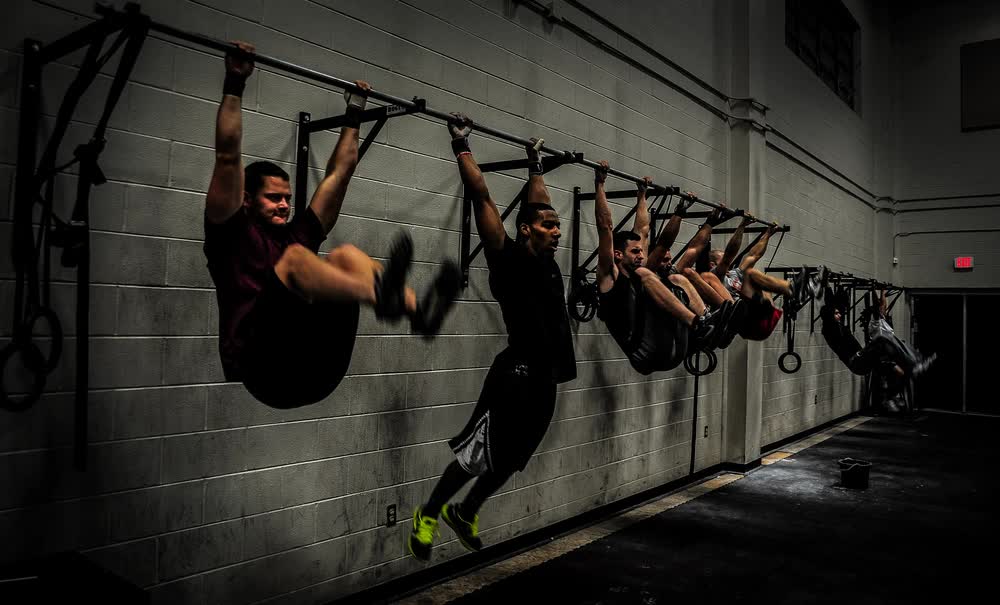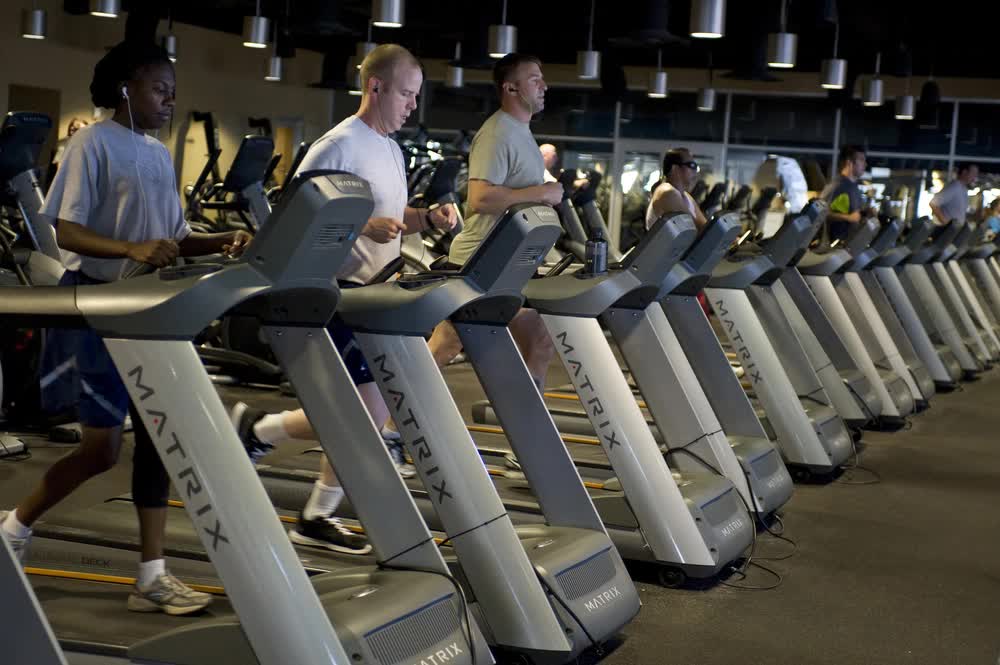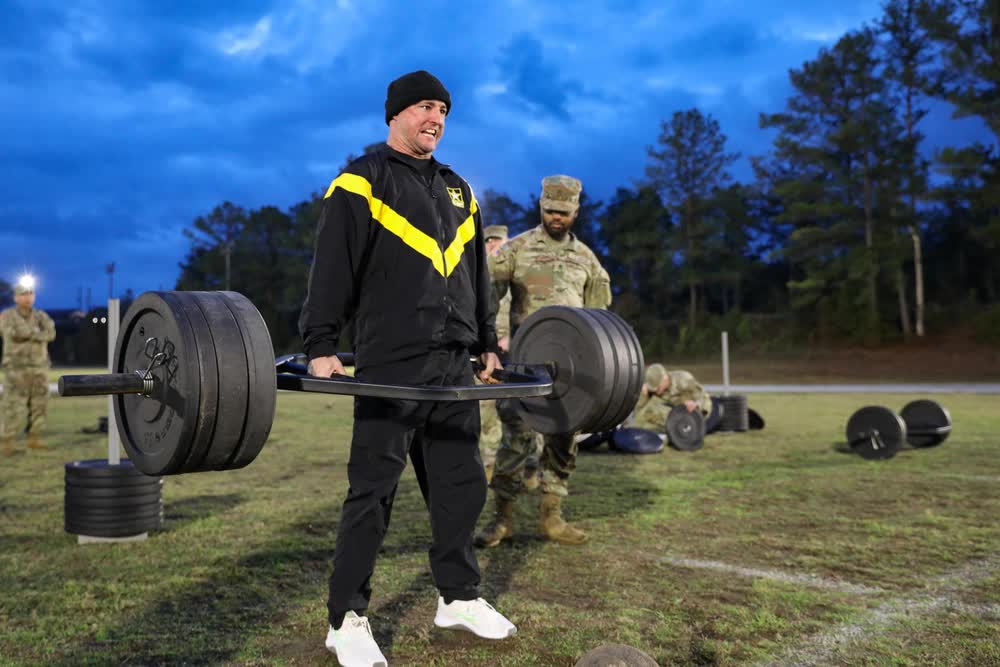A former SEAL’s guide to mixing up your fitness routine
- By Frumentarius
Share This Article

Routine is good, especially when it comes to a personal fitness program. Without any scientific proof on which to make this claim, I would nevertheless postulate that working out at the same time every day, and having a more or less established fitness program – that you stick to – is a good thing. For one, it establishes in your mind and body the inevitability of the workout. When the appointed time of day arrives, both your mental and physical self will learn to expect, and even crave the workout. As a result, you will likely have an easier time overcoming any possible lack of motivation you might feel thanks to the workout habit you’ve established through repetition.
That said, lack of motivation does still sometimes rear its lazy head, and you have to occasionally fight through it and force yourself to get it done on those days. In such cases, varying your specific workout can help. When I am not feeling up for a planned long run on a run day, for example, I will sometimes skip the long run and do 10-12 sprints with slow jogging in between instead. Other times, I will simply shorten my planned distance, or do the run at a slower pace than usual, and count it as a low aerobic/easy day.
In other words, while I try to remain resolutely inflexible in terms of working out each day at the appointed time, I also allow myself the flexibility to mix up the specifics of the workouts. This is all in the name of preventing fitness boredom and lack of motivation. Additionally, your muscles can also benefit from a change of routine. If you regularly do 10 sets of 10 pull-ups as a part of your 100-pull-up workout, for example, your back muscles will grow accustomed to the workout and you will rarely ever feel any soreness back there. However, if you change it up one day, and do seven sets of max pull-ups instead of the usual workout, I promise you that you will feel back muscle soreness, even though you will likely do about the same number of total pull-ups.
To help you with spicing up your fitness routine, I offer below some possible alternative exercises you might want to employ, in the areas of cardio, anaerobic, strength, and high-intensity interval training.
Related: Keep fit on deployment with these improvised workout equipment ideas
Cardio

I am a firm believer in running as the best form of cardio, which is probably just because I have a runner’s physique. I love to run, and can rarely ever get my heart rate to a sustained high level doing any other form of cardio. That said, street biking, mountain biking, distance swimming, rowing machines, and stair climbers can also get the heart rate up for a sustained cardio workout if you push yourself.
Mix it up between short and long runs, as well, and between all-out “race pace” runs, and slower “easy” pace runs. Your body will thank you and you’ll find it easier to stick to the run routine if you allow yourself some variety in the runs.
Anaerobic
These short-burst, max-heart-rate workouts are great for building speed and endurance but they can be painful and easy to skip on the appointed days. My go-to anaerobic workout is typically 10-15 sprints, of varying distances and with varying intervals in between each sprint, after a fairly strenuous strength workout. The goal is to get the heart rate up and the muscles stressed in the strength workout, then to blast the heart rate up to near max for short bursts during the sprints. You can also do freestyle sprints in the pool, or bike sprints on the dreaded “assault bike” if you prefer to avoid running sprints. Climbing actual stairs fast or using a stair climber machine for high-intensity intervals can also achieve the desired anaerobic result.
Related: US SpecOps were the vanguard of a revolution in battlefield medicine
Strength

There are a million different exercises to build or sustain muscles in the gym. You can use free weights while doing heavy Olympic-style lifts; you can use weight machines and focus on different muscle groups on different days; or you can have a workout that mixes free weights with machines and calisthenics (push-ups, pull-ups, etc). I tend to employ the latter technique, using free weights for deadlifts, squats, leg presses, shoulder presses, and some chest and arm stuff. I also use kettlebells for deadlifts, weighted lunges, and “Farmer’s Walks.” The machines come in for some chest and leg work, typically.
Finally, I am a big fan of air squats, jumping squats, walking lunges, jumping lunges, push-ups, pull-ups, flutter kicks, planks, and a few other calisthenic exercises. Use all of the above, mix it up, and work your whole body over any given week, and you should never get too bored in the gym.
HIIT
High-intensity interval training (HIIT) is one of the more difficult fitness disciplines to really do well on your own, without some sadistic instructor pushing you to go further, faster, and harder. My wife uses Orange Theory gyms for her HIIT workouts and I must say, from what she tells me and the results she achieves, they do a great job of pushing their clients. However, if you want to build your own HIIT routines, that is also doable. You just need to have the discipline to stick to the time intervals, and to build a workout that is sufficiently kicking your butt. My standard one involves sets of pull-ups, jumping squats, jumping lunges, and sprints within set time intervals. Sometimes it is timed sprints spaced out over three-five miles of running. Whatever you employ, mix it up, and don’t let it become easy. That defies the whole point.
Hopefully, this will help you keep it fitness fresh and new out there.
Read more from Sandboxx News
- America’s Replicator Initiative signals a shift in combat philosophy
- Video: Russia claims Ukraine’s F-16s will carry nukes
- The Russian A-545: An oddball AK rifle in Ukraine
- Congress to the Air Force: Buy More F-15EX Eagle IIs
- 4 Royal Marines once strapped themselves to attack helicopters and rode into a Taliban compound
Related Posts
Sandboxx News Merch
-

‘AirPower’ Classic Hoodie
$46.00 – $48.00 Select options This product has multiple variants. The options may be chosen on the product page -

‘Sandboxx News’ Trucker Cap
$27.00 Select options This product has multiple variants. The options may be chosen on the product page -

‘Kinetic Diplomacy’ Bumper Sticker (Black)
$8.00 Add to cart
Frumentarius
Frumentarius is a former Navy SEAL, former CIA officer, and currently a battalion chief in a career fire department in the Midwest.
Related to: Special Operations

Delta Force Assessment and Selection: Spending nights at base camps

The US Navy is forced to wait on its new flagship frigate

Apophis: Are we prepared to defeat Earth’s greatest planetary threat?

Do sailors have a future in the US Navy? No, according to former Army general
Sandboxx News
-

‘Sandboxx News’ Trucker Cap
$27.00 Select options This product has multiple variants. The options may be chosen on the product page -

‘AirPower’ Classic Hoodie
$46.00 – $48.00 Select options This product has multiple variants. The options may be chosen on the product page -

‘AirPower’ Golf Rope Hat
$31.00 Select options This product has multiple variants. The options may be chosen on the product page -

‘Sandboxx News’ Dad Hat
$27.00 Select options This product has multiple variants. The options may be chosen on the product page
